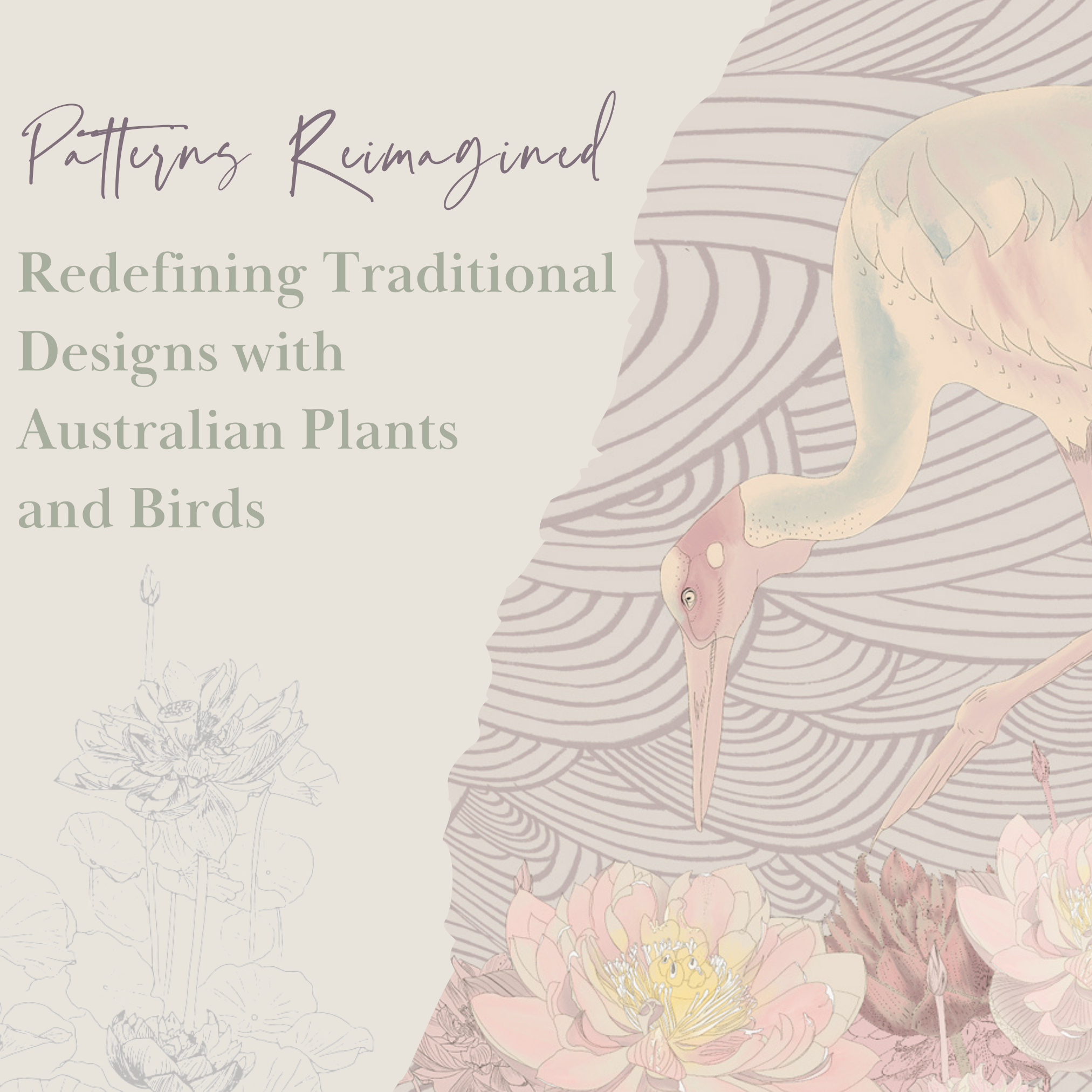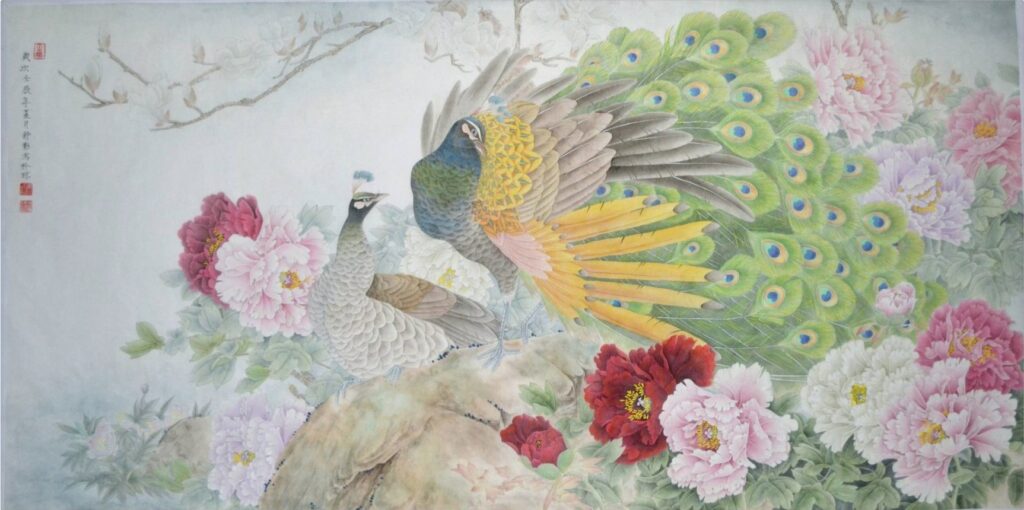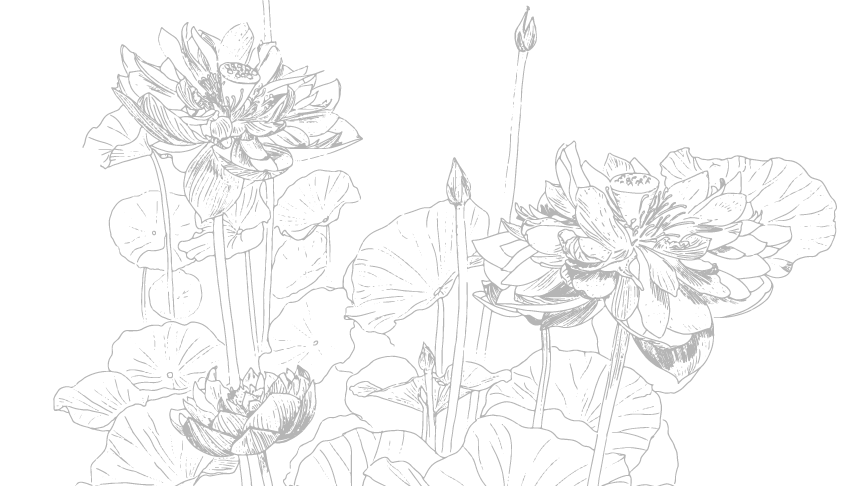
Patterns Reimagined: Redefining Traditional Designs with Australian Plants and Birds
No idea is so outlandish that it should not be considered.
~ Winston Churchill
I have an apology to make.
You see, I only realised recently that it’s been one year since my launch, and that all of my posts have been focused on the art of nature journaling. But I failed to write anything about surface pattern design, and in particular what kind of designs I currently create, what I hope to create in the future and what inspires my designs.
What do nature journaling and my pattern designs have in common? It’s simple really…the unique birds and plants of our incredibly diverse Australian landscapes. That is the common thread. And the skills learned in one, i.e. nature journaling, inform the other (pattern designs).
The History of Patterns
Historically we look to those artists and designers who have gone before us. We also look to different cultures and periods in human history to understand how they have come to influence design, and in this case, surface pattern design.
Many of the current designs are still very much influenced by history and geography. Take for instance, the use of flowers in design, such as peonies, tulips, dahlias, roses and cottage flowers. Or there is the lotus flower and the cherry blossom, or birds such as the crane and the peacock. These classic and timeless subjects have been used since time immemorial, and their use still persists today. And understandably so…they are all beautiful and divine in form.

Peacock and Peony Dancing under Spring Sunshine by Qin Shu
As much as I love these traditional flowers and birds, when it comes to my own designs, I’m on a mission to break the mold and depart from the use of conventional European and Asian motifs. Instead, I aim to incorporate the just-as-breathtaking motifs that are based on Australian birds and native plants and wildflowers. And not necessarily the most well-known or popular ones, but also the ‘little Aussie battlers’ (an Australian euphemism); those often overlooked, but incredibly diverse, interesting and beautiful birds, plants and wildflowers of our Australian landscapes that few people know even exist.
For me it’s about patterns reimagined. Instead of a crane, I’d rather use the Australian Brolga or the Lyrebird. Instead of the branches and leaves of willows, pines and birch trees of the northern hemisphere, I’d much rather incorporate our amazing and diverse Eucalypts, Banksias, Acacias and Leptospermums aka Teatree.
For instance, take my most recent design below called ‘Lotus Pond‘. It’s a Japanese-inspired design I created for a challenge called ‘Serene Wallscapes’ and I wanted the design to convey feelings of tranquility, calm and serenity. I wanted it to have a softness and delicacy to it.

The Lotus Pond: wallpaper design by Kerry Warnholtz
So in reimagining this pattern, instead of using peonies, I chose to use an Australian Lotus called ‘Pink Lotus‘ as its’ petals and overall shape has a look not unlike the peony. This particular species of lotus is found in South-Eastern Qld and in other states of Australia. The lotus subjects I used for my drawings are currently growing in ponds at the Brisbane Botanic Gardens. I took a number of photos of this lotus for the express purpose of using the images to create my pattern (and because the flower is stunning).
I also wanted a bird to be represented, so instead of drawing the crane, I drew the ‘Australian Brolga’ in my design. I wasn’t able to draw upon my own photographs (which I endeavour to if I can), so I collected a number of reference images and pulled different elements from them to create a drawing of what I wanted.

My Idea Creation Process
When an idea comes for a pattern collection or placement design (a single print or design that is not a seamless repeat), my first thought in the form of a question is “what Australian bird or plant/flower can I incorporate that mimics the style of this design?” and “what will give me the same look and feel and capture the essence of its’ traditional counterpart?”
You see, I love historical and vintage and the layered complexity of all things old-worldly (if that’s a word). But I also love the energy, the boldness, innovation and simplicity of modern design too. So I sometimes like to fuse the old and the new, but specifically with an Australian twist.
And of course I love a great story…the quirkier and more interesting, the better. I feel inspired to tell the story of our Australian birds and plants through my designs and to pique the curiosity of the observer, so they might stop and linger just a little longer. And I hope they will then explore these subjects beyond their surface beauty to develop a deeper understanding and appreciation of our natural world – to form a connection and ultimately to feel protective of it.
So you see, there is a method in my madness in the pursuit of learning and teaching art journaling and walking in nature in Australia. And through my designs inspired by this connection, I hope to inspire others.
As an emerging surface pattern designer, I’m still in the exploration stage of pattern creation. From the types of mediums used to create the artwork, to the process of capturing my artwork, right through to the design software I use to get the end result, I’m still experimenting and discovering techniques that will hopefully bring to light the vision I have in my mind.
So thank you for joining me thus far on this new journey. I hope you stick around, because I’m only just beginning.

*P.S. ‘Lotus Pond’ will soon be available on wallpaper, bedding, fabric and home decor. You can view my design here in my Spoonflower shop.
**P.S.S. Want to be notified of new pattern and product releases? Join my mailing list.
Next Post
Previous Post
Site Designed by The Template Emporium, © Copyright 2023. All rights reserved. Read our Privacy Policy and Website Terms & Conditions.
All photographs by Kerry Warnholtz unless otherwise stated. Profile photo by Wild Spirit Photography.
Site Designed by The Template Emporium,
© Copyright 2023. All rights reserved.
Read our Privacy Policy and Website Terms & Conditions. All photographs by Kerry Warnholtz
unless otherwise stated. Profile photo by Wild Spirit Photography.
'In the spirit of reconciliation I acknowledge and pay respect to the land and to the traditional families of the Yugambeh region of South East Queensland and their Elders, past, present and emerging, and extend that respect to all Aboriginal and Torres Strait Islander peoples today.'
'In the spirit of reconciliation I acknowledge and pay respect to the land and to the traditional families of Yugambeh region of South East Queensland and their Elders, past, present and emerging, and extend that respect to all Aboriginal and Torres Strait Islander peoples today.'
Acknowledgement of Country
Acknowledgement of Country
Contact me
Follow me